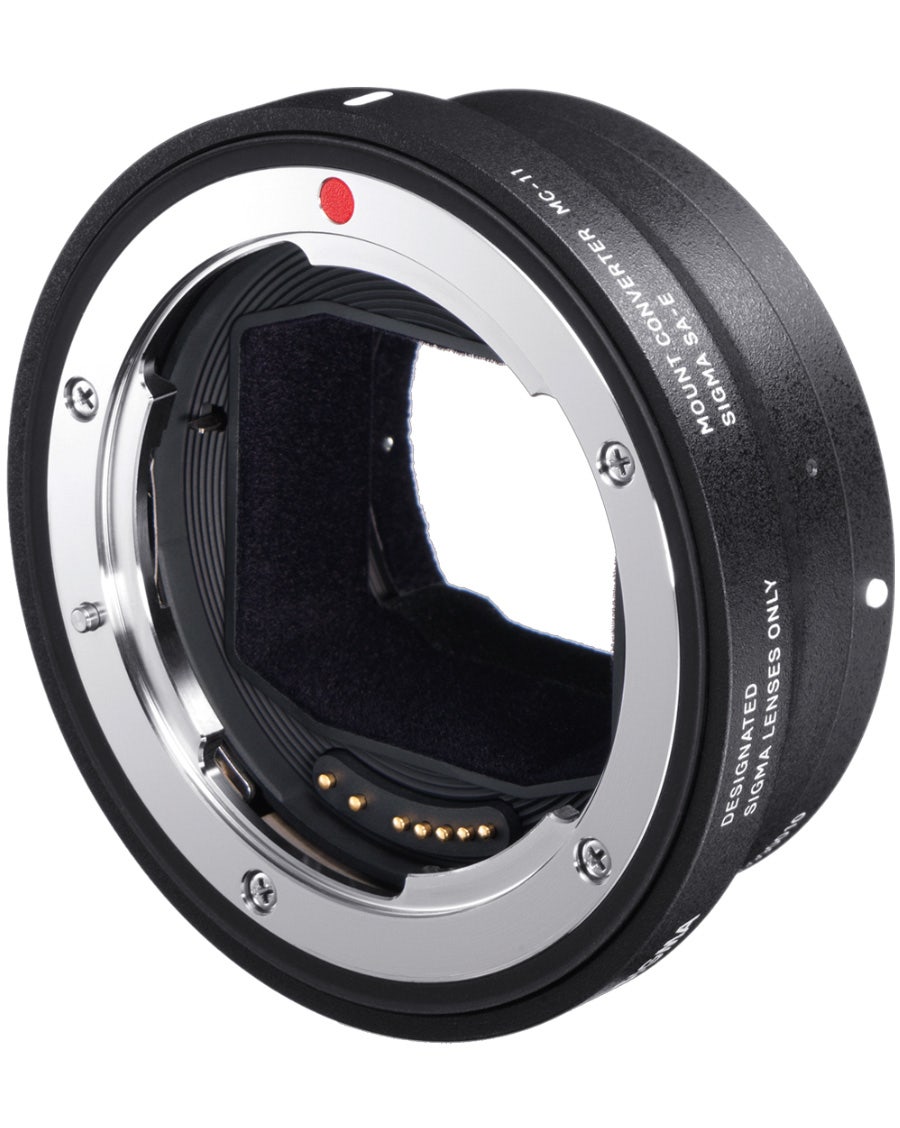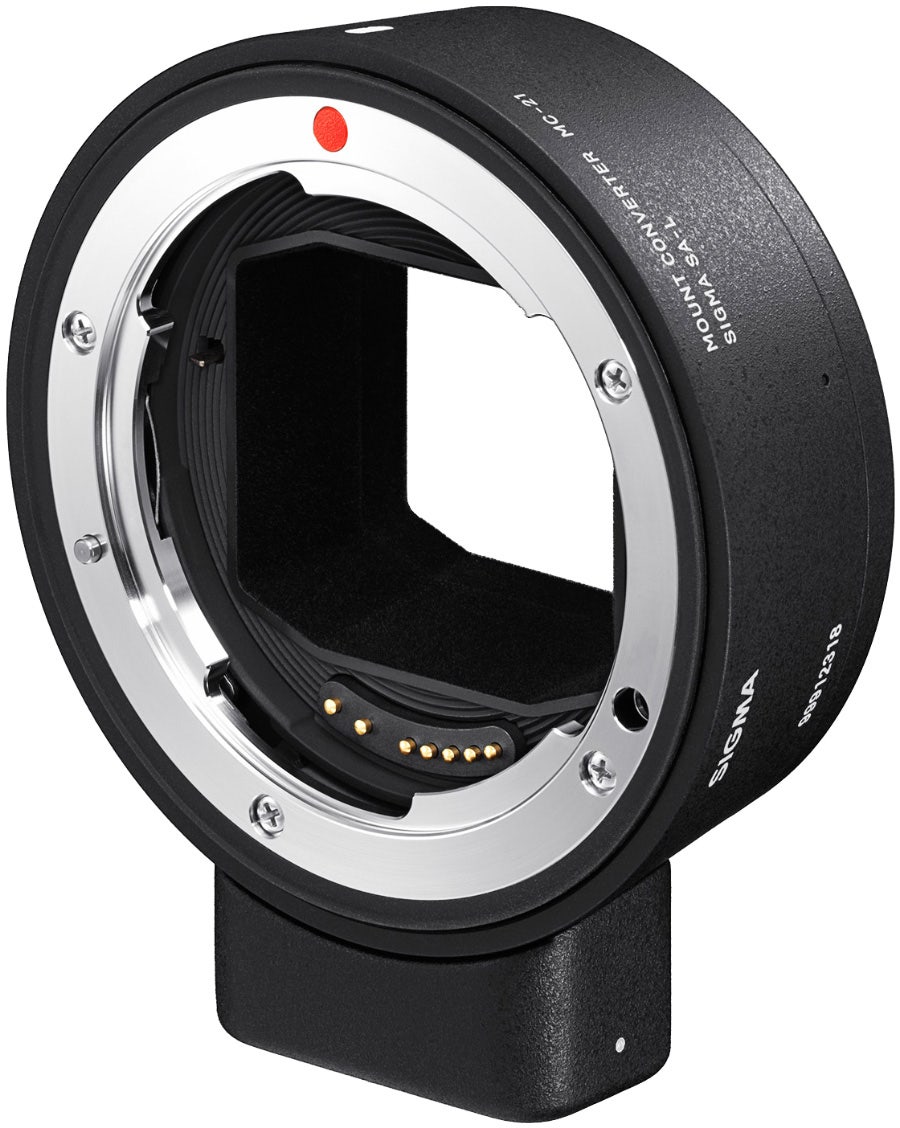Which SIGMA lenses fit my mirrorless cameras and DSLRs?
This pieces was originally created by SIGMA Corporation of America for blog.sigmaphoto.com
SIGMA offers a great variety of lenses, from ultra-wides to super-telephotos, primes and zooms, for many popular interchangeable camera systems.
We have mirrorless lenses for our own L-mount system, along with our L-Mount Alliance partners Panasonic and Leica; along with both full-frame and crop-sensor lenses for Sony E-Mount, along with Canon and Nikon DSLRs. Add in our adapters for Sony E-Mount and L-Mount, as well as the OEM adapters to pair DSLR lenses with the mirrorless camera offerings from Canon and Nikon, and the landscape has become very complex and somewhat confusing over the past few years. Follow along as we explain which lenses are available for which camera systems, natively, and with adapters.
What SIGMA lenses are made specifically for mirrorless full-frame cameras?
SIGMA DG DN lenses are available in Sony E-Mount and for L-Mount cameras from SIGMA, Leica and Panasonic.
In SIGMA lens naming, “DG” indicates full-frame sensor coverage, and “DN” indicates that the lens is designed specifically and exclusively for mirrorless cameras systems. Currently, SIGMA offers several lenses that are designed exclusively for full-frame mirrorless cameras in Sony E-Mount, as well as L-Mount Alliance cameras from SIGMA, Leica and Panasonic.
These include:
• 14-24mm F2.8 DG DN | Art
• 24-70mm F2.8 DG DN | Art
• 24mm F3.5 DG DN | Contemporary - NEW!
• 35mm F1.2 DG DN | Art
• 35mm F2 DG DN | Contemporary - NEW!
• 45mm F2.8 DG DN | Art
• 65mm F2 DG DN | Contemporary - NEW!
• 85mm F1.4 DG DN | Art
• 105mm F2.8 DG DN Macro | Art
• 100-400mm DG DN OS | Contemporary
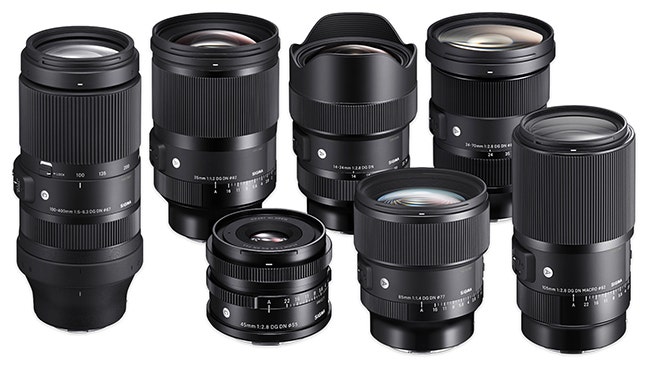

SIGMA’s selection of DG DN lenses, exclusively for full-frame mirrorless cameras
Each of these lenses is a completely new design, specifically engineered to meet the requirements and capabilities of mirrorless full-frame camera systems. None of these are simple adaptations of previously released DSLR-designed lenses.
What SIGMA lenses are made specifically for mirrorless crop-sensor cameras?
SIGMA DC DN lenses are available in Sony E-Mount, Canon EF-M, Micro Four Thirds and L-Mount varieties.
In SIGMA lens naming, “DC” indicates crop sensor coverage, and “DN” indicates that this lens is designed specifically and exclusively for mirrorless cameras systems. SIGMA currently offers a trio of fast-aperture primes for these compact systems: Sony E-Mount, Canon EF-M (EOS M series cameras), Micro Four Thirds (Olympus and Panasonic), and even crop-sensor L-Mount cameras. The 16mm F1.4 DC DN | Contemporary, the 30mm F1.4 DC DN | Contemporary, and the 56mm F1.4 DC DN | Contemporary are compact, lightweight, fast-aperture primes in wide, standard and short tele focal lengths.
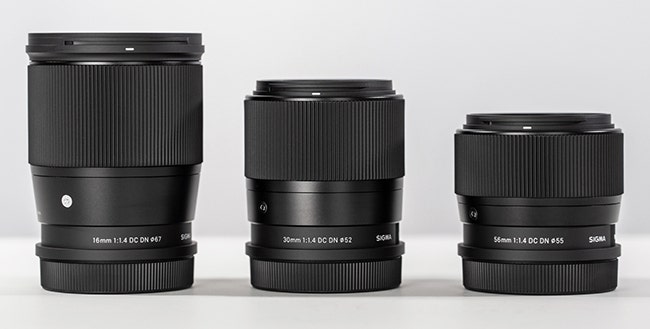

The DC DN F1.4 Mirrorless Trio for Sony E-Mount, Canon EF-M, Micro Four Thirds, and L-Mount (pictured).
What SIGMA lenses are made for both full-frame mirrorless cameras, and Canon and Nikon DSLRs?
SIGMA’s Fast-Aperture Art Prime Lenses.
In addition to the DG DN lenses designed exclusively for full-frame mirrorless, SIGMA offers ten fast-aperture prime lenses in the Art line in both Sony E-Mount and L-Mount for cameras from SIGMA, Leica and Panasonic that are adaptations of DSLR lens designs. With eight focal lengths offering F1.4 brightness from 20mm to 105mm, plus the 14mm F1.8 and the 135mm F1.8, these Art Prime lenses bring fast-aperture imaging excellence to each supported camera system.
Quick Tip: Look for prime lenses with DG HSM | Art in the name to identify this group.
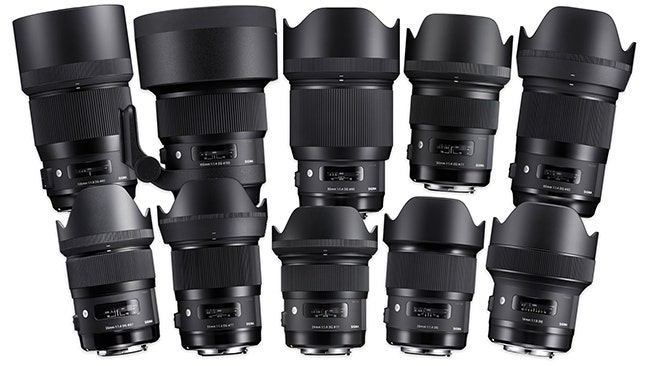

Prime lenses available for Canon EF, Nikon F, Sony E-Mount and L-Mount systems.
What SIGMA lenses can be mounted to Sony E-mount mirrorless cameras and L-Mount cameras with a SIGMA adapter?
In addition to a growing line of lenses for these mirrorless systems, SIGMA offers adapters for Sony E-Mount and L-Mount cameras that allow SIGMA’s Art, Sports and Contemporary lenses in Canon EF mount to be paired with each camera system. The SIGMA MC-11 is the EF to Sony E adapter. The SIGMA MC-21 is the EF to L-Mount adapter.
The benefits are at least two-fold here: It allows for photographers who have a significant investment in EF mount SIGMA glass to adapt their current lenses as they migrate to a new system; and it allows for many more lens choices for E-Mount and L-Mount systems based on the full catalog of Art, Sports and Contemporary lenses released since 2012.
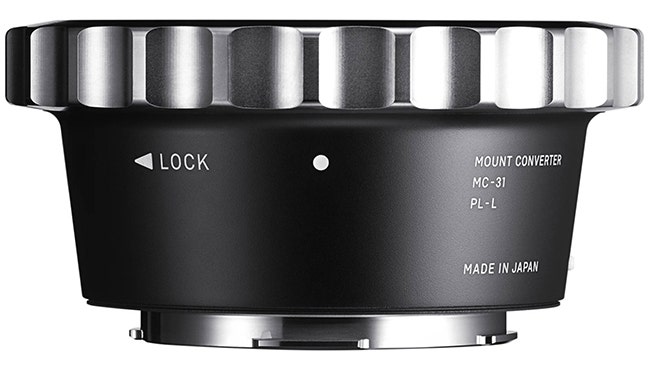

The SIGMA MC-31 PL-L Mount Converter
Additionally, the SIGMA MC-31 Mount Converter will allow for PL-mount Cine lenses to pair with the SIGMA fp and other L-Mount cameras.
Does SIGMA make any lenses in Canon RF, Nikon Z or Fujifilm X mounts?
At this time, no. SIGMA does not currently create lenses in these lens mounts. In the case of Canon and Nikon, we suggest using OEM mount adapters to pair our Canon EF or Nikon F mount lenses with their growing selection of mirrorless cameras. Third-party mount adapters are also available, including some for Fujifilm cameras, however SIGMA does not test third-party adapters and cannot guarantee compatibility.
What is SIGMA Mount Conversion Service?
Mount Conversion Service allows for SIGMA lenses to be switched between released versions of a given lens.
For mount conversion to be possible, the lens must be currently available in both the current mount and the mount you wish to convert to. For example, a 24-70mm F2.8 DG OS HSM | Art lens in Canon EF mount can be converted to Nikon F, but cannot be converted to Sony E-Mount or L-Mount. Likewise, a 24-70mm F2.8 DG DN | Art lens can be converted from E-Mount to L-Mount, but cannot be converted to Canon or Nikon DSLR mounts.
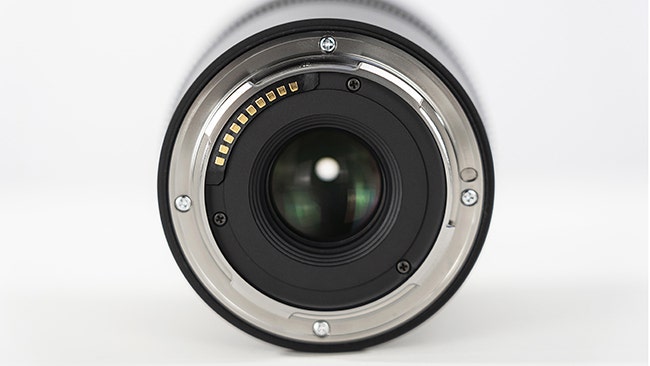

Learn more about SIGMA Mount Conversion Service here.
What SIGMA lenses fit my Canon Rebel and Nikon DX cameras?
And how do I tell what SIGMA lenses are designed for crop-sensor DSLRs?
SIGMA lenses designed for crop-sensor (APS-C size) DSLRs have DC in the lens name, and do not have DN in the lens name. Examples of Canon crop-sensor DSLRs include the entire Canon Rebel series, EOS 90D, EOS 80D, EOS 7D Mark II, and others. Examples of Nikon crop-sensor DSLRs include the Nikon D3500, D5600, D7500, D500, and earlier, similarly-named cameras. Nikon crop-sensor cameras can be easily identified by their “DX” format designation.
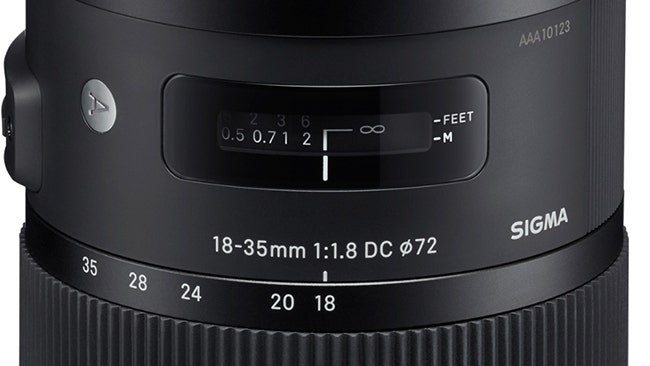

A SIGMA “DC” format lens, designed for crop-sensor DSLR cameras
SIGMA DC lenses for DSLRs feature the same Canon EF and Nikon F mounts as the full-frame lenses, and thus, can technically be mounted to full-frame DSLRs, but you will notice significant vignetting on full-frame cameras, since the smaller image circle will not cover the entire sensor. If you decide to use a DC lens on a full-frame camera, be advised you will need to manually crop the image or utilize an auto crop mode in the camera’s menu.
SIGMA DG lenses for DSLRs (no DN in the name) — which cover full-frame sensors — can be used on crop-sensor cameras without issue, however the effective focal length will be multiplied by 1.6x on Canon cameras, and 1.5x on Nikon cameras.
What SIGMA lenses fit my full-frame Canon and Nikon DSLR cameras?
SIGMA lenses with DG in the lens name — that do not have DN in the lens name as well — are designed for Canon and Nikon full-frame DSLRs. Full-frame Canon camera bodies include the EOS 5D and 6D models, and EOS-1D X models. Full-frame Nikon camera bodies include the D6, D850, D780, D610, Df and similar models. Nikon full-frame cameras can be easily identified by their “FX” format designation.
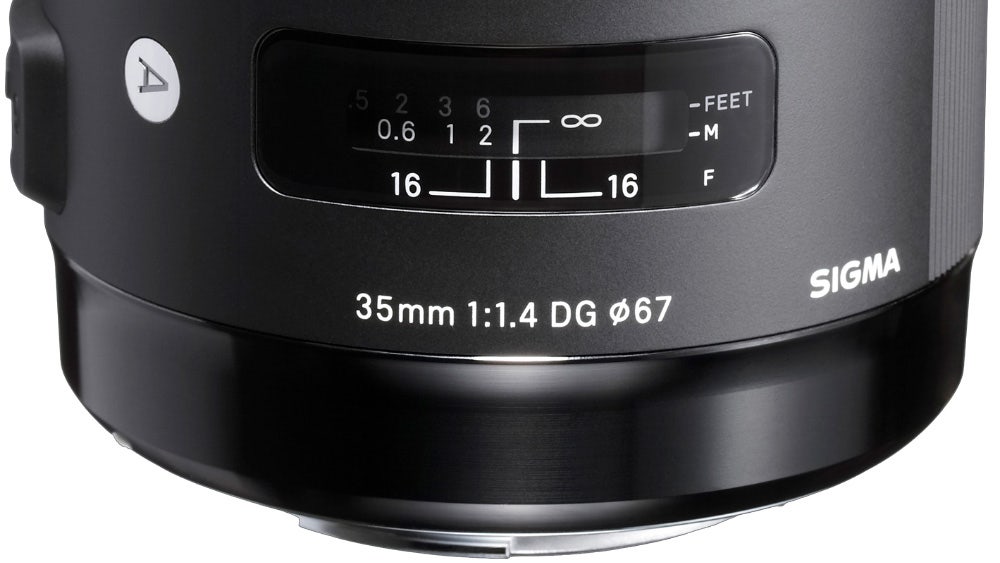

A SIGMA “DG” format lens, designed for crop-sensor DSLR cameras
Does SIGMA make lenses for Leica M-Mount?
Currently, no. It can be a bit confusing as SIGMA is part of the L-Mount Alliance with Leica and Panasonic, but these lenses and cameras use L-Mount exclusively.
Sometimes, Canon’s EF-M mount — used on EOS M series crop-sensor mirrorless cameras like the EOS M50 and M6 Mark II — is confused for M-Mount, but these are completely separate mounting systems. SIGMA does make three DC DN prime lenses for EF-M (the 16mm F1.4 DC DN | C, the 30mm F1.4 DC DN | C and the 56mm F1.4 DC DN | C), and SIGMA EF mount lenses are compatible with EF-M using a separately available mount converter.
What's the difference between Art, Sports, Contemporary and Cine Lenses?
In 2012, SIGMA announced SIGMA Global Vision and introduced three lens lines: Contemporary, Art and Sports. Each line has a distinct design philosophy. Contemporary lenses are designed for outstanding optical performance in compact, lightweight designs. Art lenses are designed for the ultimate image quality and artistic expression. Sports lenses are designed for excellent optical performance, rugged and weather-tough builds, and user customization through the USB Dock and SIGMA Optimization Pro.
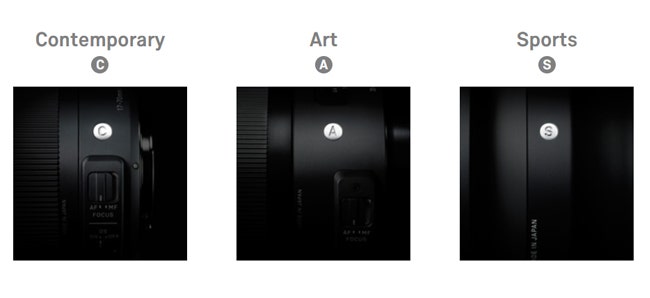

In 2016, the SIGMA Cine lenses were announced. SIGMA Cine lenses and SIGMA Art lenses share the same optical formulas, however, the Cine lenses are designed specifically for moviemaking, with all-metal barrels, manual geared focus and zoom rings, and uniform sizing and color transmission.
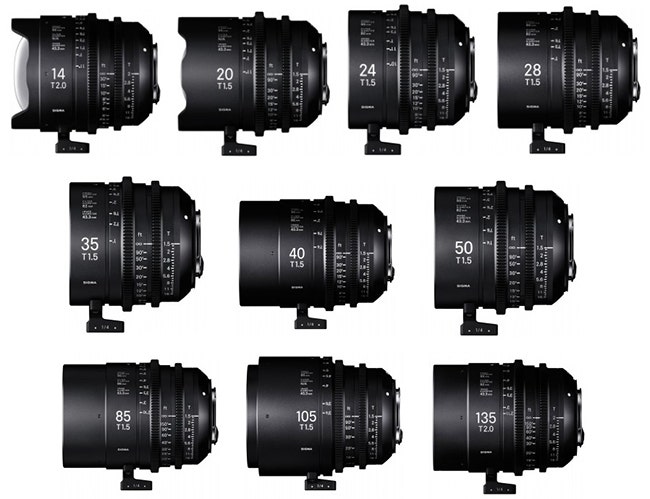

The FF High Speed Prime Line of Cine lenses
Here is what unifies the SIGMA lens lines:
• All SIGMA lenses are made in Japan, at our factory in Aizu.
• All SIGMA lenses undergo individual Image Quality testing on SIGMA's proprietary A1 MTF device to ensure optical imaging performance.
